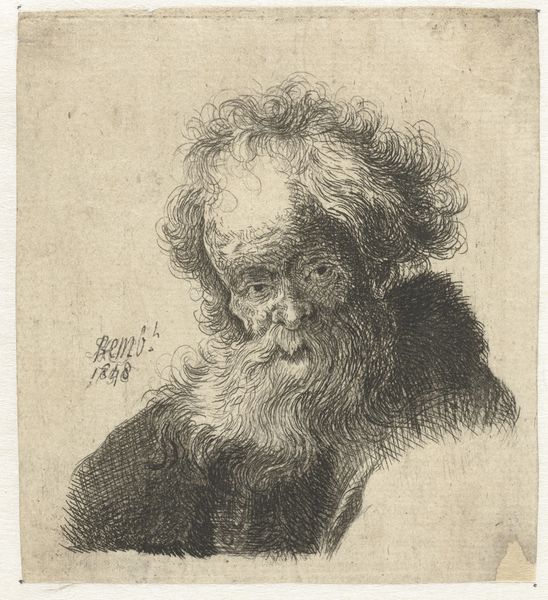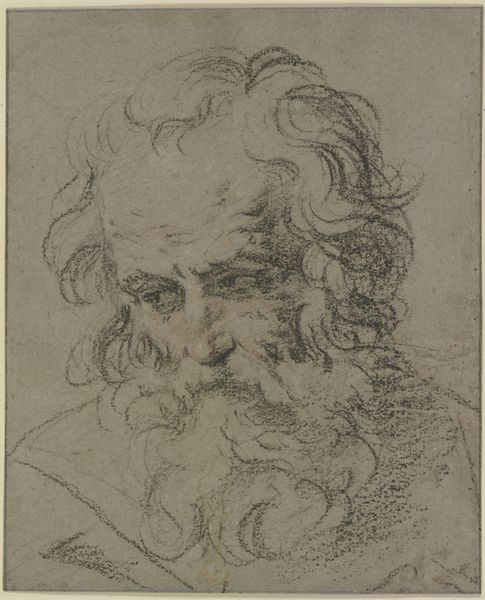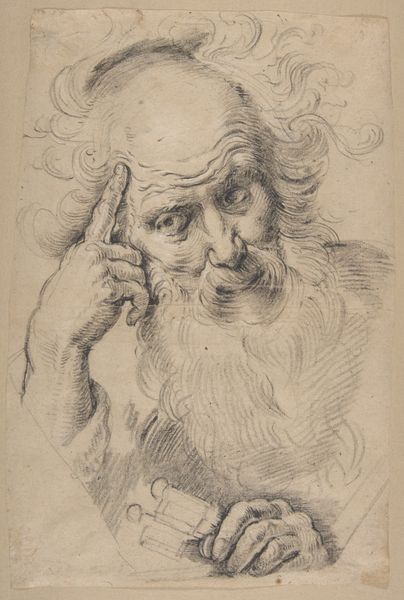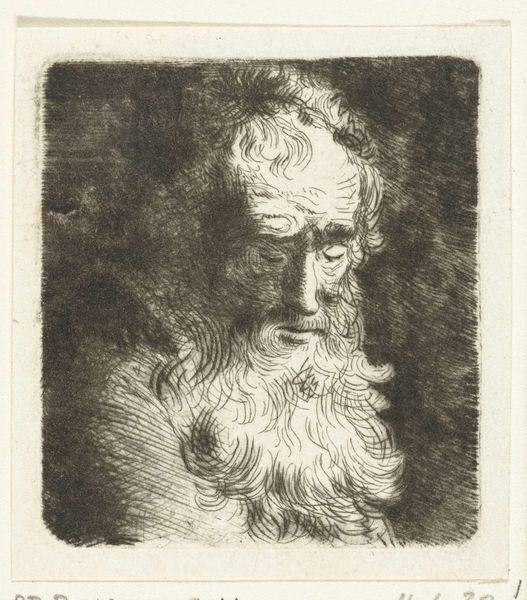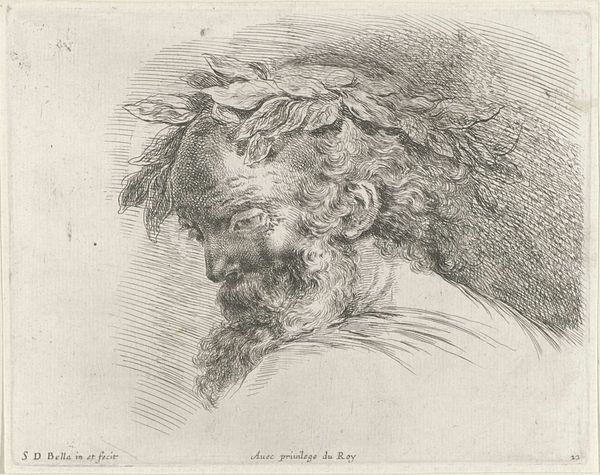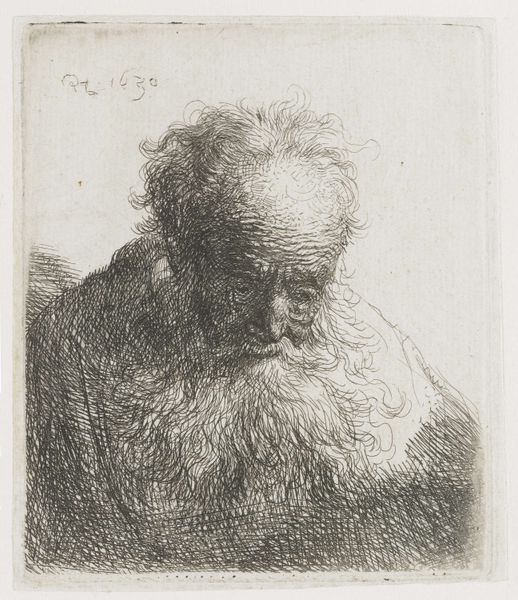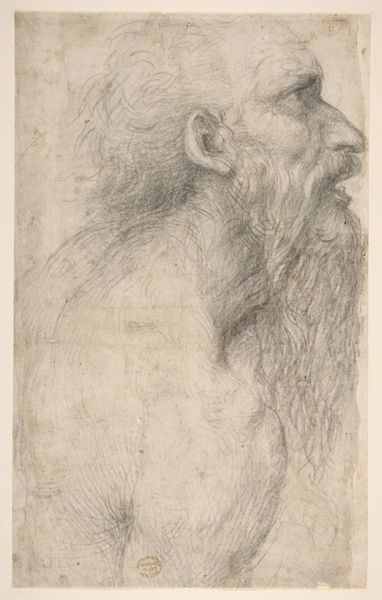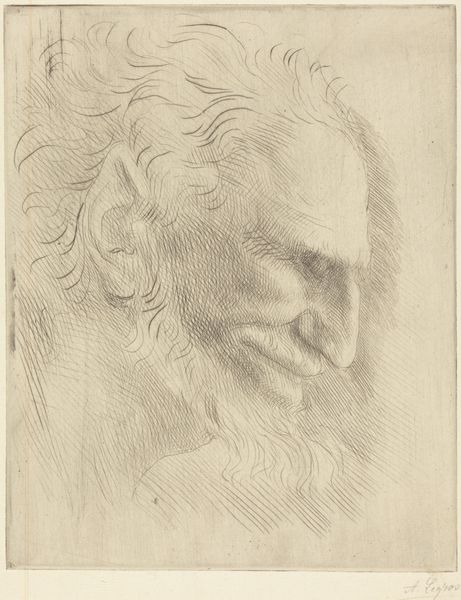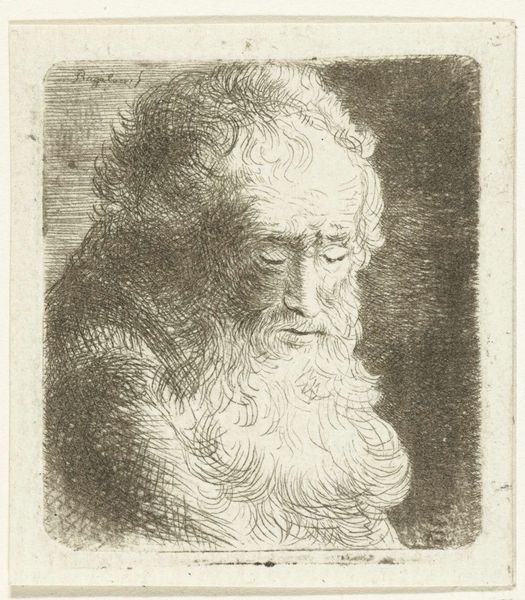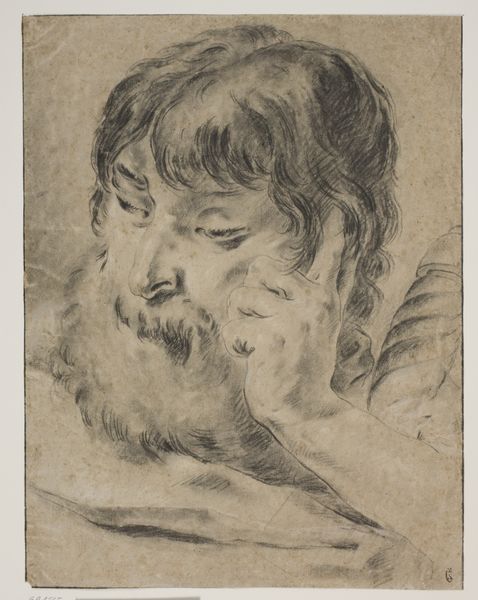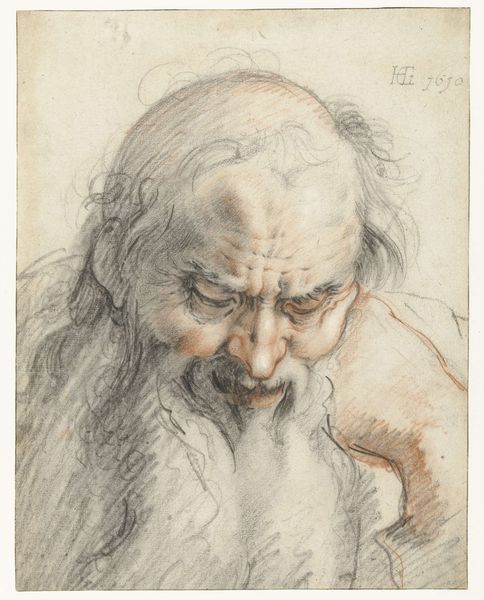
drawing, etching
#
portrait
#
pencil drawn
#
drawing
#
amateur sketch
#
light pencil work
#
baroque
#
pen sketch
#
etching
#
pencil sketch
#
pencil drawing
#
ink drawing experimentation
#
pen-ink sketch
#
sketchbook drawing
#
pencil work
#
realism
Dimensions: height 80 mm, width 75 mm
Copyright: Rijks Museum: Open Domain
Jan Lievens made this etching of an old man's head using metal and acid. Lievens scratched the image into a waxy coating on a metal plate, then bathed the plate in acid. The acid bit into the exposed metal, creating lines that would hold ink. The material qualities of metal and acid define the image. The etching process allowed Lievens to create fine, detailed lines, ideal for capturing the texture of the man’s hair and beard, and the wrinkles of his face. The controlled corrosion of the metal by the acid gave the print its unique character, a contrast between light and shadow. Prints like this were relatively inexpensive to produce and distribute, making art more accessible to a wider audience. The print's existence speaks to a shift in artistic production, where reproducibility allowed art to circulate beyond the elite. Understanding the materials, and processes employed, allows us to appreciate the democratizing potential inherent in printmaking.
Comments
No comments
Be the first to comment and join the conversation on the ultimate creative platform.
